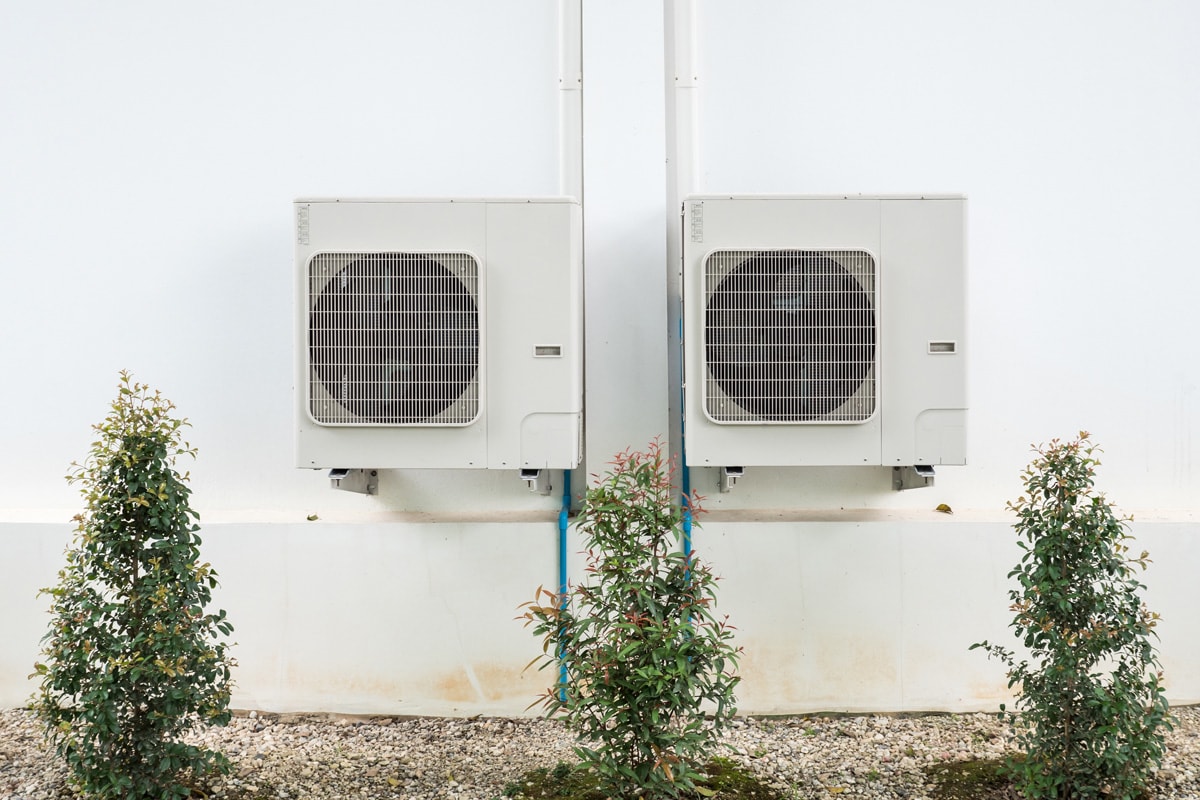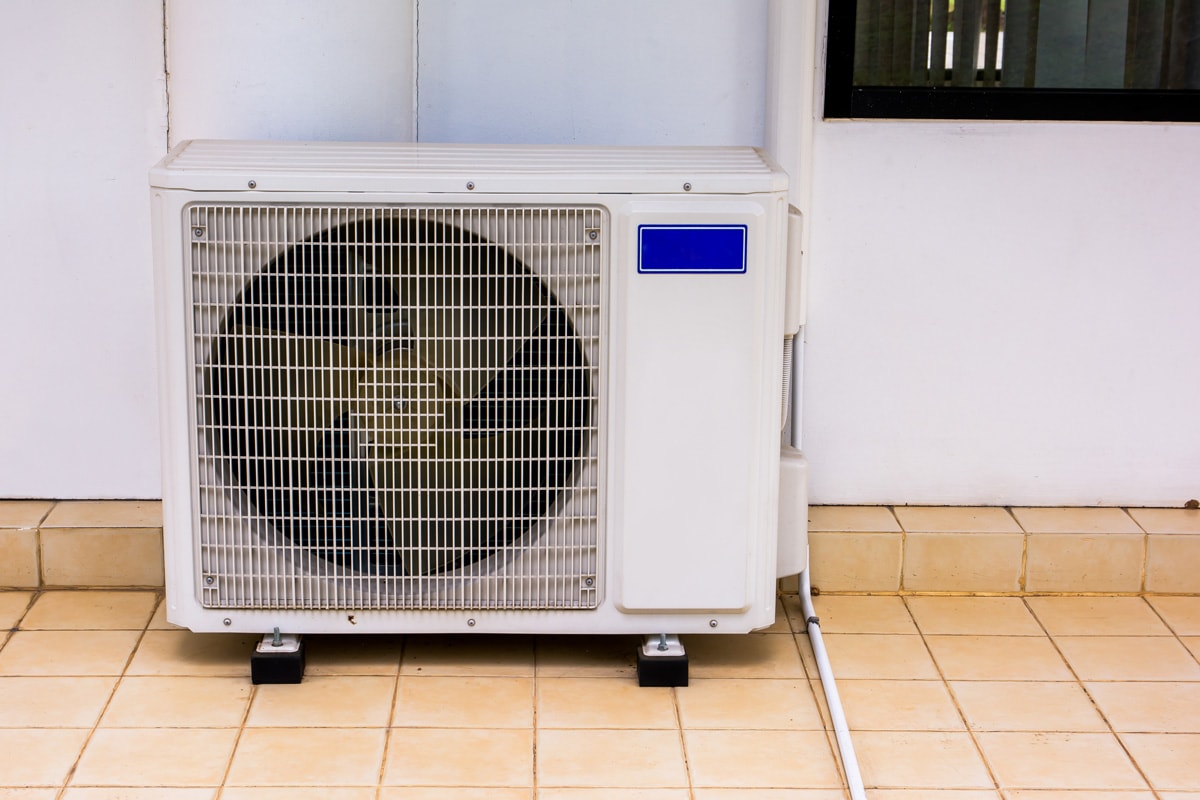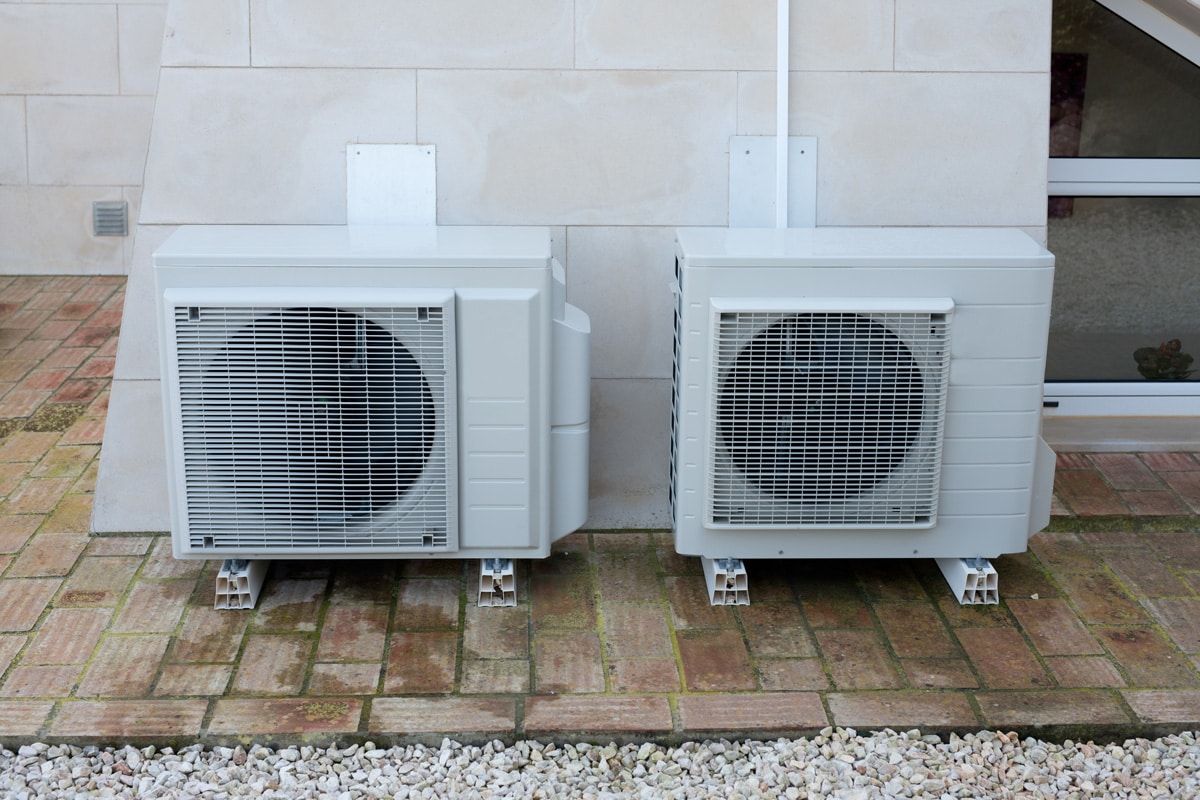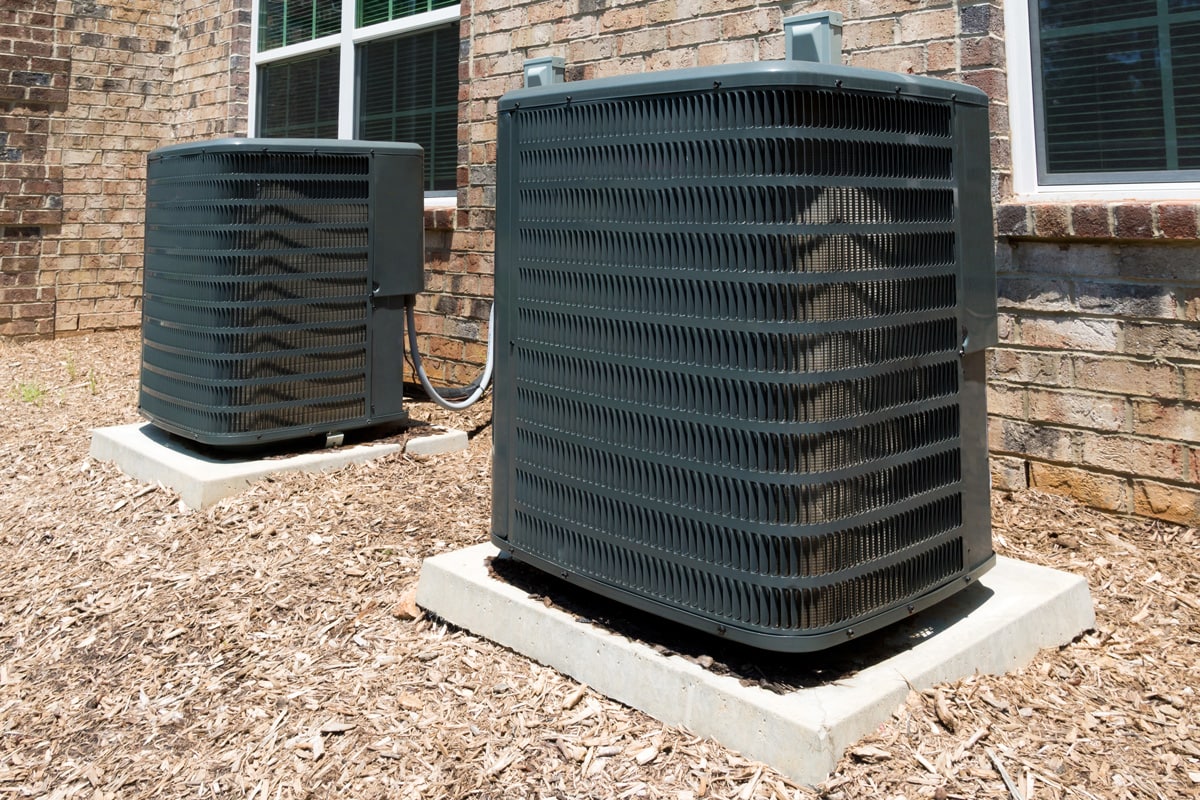Now that we are still in the pandemic, having additional protection against germs, bacteria, and viruses sounds like a good idea. And one of the emerging and fast-rising filtration and sterilization technologies is UV light. So, if you consider using a UV light for your HVAC system, we researched its pros and cons. Here is what we found.
Here is a comparison between the pros and cons of integrating UV light into your HVAC system:
|
Pros |
Cons |
|
|
Now that you know the advantages and disadvantages of having one, we'll discuss the factors you must consider as a homeowner in using UV light in the succeeding sections. We'll also cover the types of UV lights you can integrate into your HVAC system, how much it costs, and if they're effective against Covid-19. Keep reading!
![Two huge black air conditioning units mounted on concrete pads, UV Light For HVAC: Pros & Cons [Considerations For Homeowners]](https://hvacseer.com/wp-content/uploads/2022/09/UV-Light-For-HVAC-Pros-amp-Cons-Considerations-For-Homeowners.png)
What Type of UV Light Is Used For HVAC Systems?
Since many years ago, airborne microbes have been rendered inactive by UV lamps. Some early research focuses heavily on eliminating highly contagious bacteria, which were frequently found in healthcare settings.
The most potent germicidal light wavelengths were discovered to be those in the short wave, or C band, of UV light (UVC). UVC is often produced by UVC fluorescent bulbs. These lamps emit UVC light via an electrical discharge through low-pressure mercury vapor contained in a glass tube (primarily at the mercury wavelength of 253.7 nm).
UVC from mercury lamps is also referred to as UVG to denote that it is germicidal because it has been discovered that this wavelength is approximately the best at destroying bacteria.
What Are The Factors To Consider In Installing UV Lights To Your HVAC System?
1. Safety
When dealing with UV lights, you need to be careful. They are very different from those for regular lighting. They cannot simply be plugged in and turned on.
UV-C rays, which are much more powerful than the UV-A and UV-B rays from the sun, are emitted by UV products. Your skin may burn from UV-C light exposure, and your eye's retina may become damaged.
Because of this, it's crucial to ensure that your UV system is as safe as possible.
2. Maintenance
According to studies, maintenance is one factor in poor indoor air quality. Despite the UVGI systems' claims of low maintenance, regular filter and light replacement is still necessary.
If the lamps are not kept up with, it has been demonstrated that their performance would considerably deteriorate.
The same issues with interior air quality will affect building owners and occupants if a preventative maintenance plan is not fully implemented.
3. Effectiveness
Since dust and fungi will still be present, UV lamps for your HVAC will not help your allergy symptoms.
Additionally, if your HVAC system has leaking or damaged ducts, the vacuum they create may draw in additional contaminants from crawl spaces and attics, decreasing the efficiency of the UV light.
Only when bacteria come into touch with the UV light's light spectrum is it effective. Any of the aforementioned contaminants will endure if they are protected from its light spectrum.
4. Installation
UV lighting inside your home's evaporating unit should be installed by a qualified air conditioning expert. The light needs to be connected to the HVAC evaporation unit so that it only turns on while the system is running.
The technician must carefully clean the air handler system and check the ductwork for leaks before installing the equipment. The UV light system will function best under these circumstances.
5. Additional Filters
Keep in mind that purchasing a decent air filter should come first, and only then should you consider purchasing a proper ultraviolet lamp, which serves as an extra air-cleaning precaution.
The best option is a HEPA air filter, which will deal with the larger particles while the UV light will get rid of the germs. It is crucial to deploy these two in tandem since any big particles can protect bacteria and viruses from the UV light's barrage.
6. Cost
The price of installing an HVAC UV light will vary depending on the kind of lamp you choose. Do keep in mind that you would have to pay for the UV light itself as well as the lamp, installation, and energy the light will require to operate.
UV lamp installation is expensive. Unfortunately, though, the costs will not stop here. These lamps are also reasonably expensive to maintain.
What Are Some Safety Tips You Need To Remember If You Have A UV Light For Your HVAC System?
Here are some tips you can follow for a safer installation and operation of the UV lights for your HVAC system:
- The first and most crucial step in installing UVC items is to work with a qualified electrician. It is likely necessary to wire UVC fixtures on a separate circuit. You shouldn't turn on your UVC fixtures and conventional lighting simultaneously. Utilizing a separate circuit is a crucial safety precaution because most UVC fixtures need space to be vacant.
- Think about UVC light controls. Even more crucial than controls for items using normal lighting are controls for UVC products. This is not about energy conservation. Controls make sure that nobody is exposed to UVC light, which is dangerous.
- To ensure no one enters a room when a germicidal UV lamp is operating, install an indicator light outside the door.
- Another precaution to ensure no one enters a room while a cycle is going is to hang a warning notice outside the door. Even a small sign might serve as a reminder that something is off and extra vigilance should be exercised.
- Wear the correct PPE when exposing yourself to UVC light. Cover your eyes and wear safety gloves and long sleeves if you need to be in a room where a UVC light is running.

Coil Sanitizing Vs. Air Sanitizing UV Lights- What's The Difference?
The are two types of UV lights you can use in your HVAC system:
Coil Sanitizing UV Lights
This type is fitted in some filters, condensation pans, and cooling coils that are difficult to access. To stop the growth of mold, the light is on constantly.
A system of this kind is put in place to focus on vulnerable areas that are prone to microbial growth. It aids in cleaning the system's "deepest" areas, such as the fins, edges, grooves, and seams.
Air Sanitizing UV Lights
Here, as the air passes through the return ducts, the UV light can clean it. The blower motor and lamp are in sync, so the lamp only turns on when the system is turned on.
Within a certain area of the ducting, this type increases the duct's reflectivity. As a result, the UV light is at its strongest and the system is at its most efficient.
How Much Does A UV Light Cost- Including Installation?
The cost of having UV lights in your HVAC system ranges from $170 to $820. This includes the cost of the lamp, bulb, and installation.
If you want to use a coil sanitizing UV light, the costs range from $170-$570. But if you opt for air sanitizing UV lights, you can expect the cost to be between $355 and $820.

The key distinction between the cheaper and more expensive alternatives is that the latter typically use a single lamp, whereas the more expensive ones feature two bulbs and some even include an air filter in the HVAC UV light kit.
Additionally, these factors also impact the cost of UV light:
Wavelength
Higher wavelength UV lights are available, although they typically cost more. They are more efficient, though, because light can penetrate germs farther.
Additional/Special Features
A variety of additional accessories are available for purchase to update your system. For instance, auto-sensing smart ballasts can show the precise location of a fault in the system, or an LED display system can notify you when maintenance is necessary.
Installation
DIY installation is feasible and cost-effective, but it's advisable to have at least intermediate experience working on projects of this nature.
Before you do the lighting installation yourself, check the warranty terms of your equipment.
Are UVC Lights Effective In Inactivating Covid-19 Virus?

According to the US FDA, due to the lack of published information regarding the dose, wavelength, and duration of UVC radiation necessary to inactivate the Covid-19 virus, the efficacy of UVC lamps in doing so is unknown.
It is crucial to understand that, typically, if a virus or bacterium is not exposed to UVC directly, UVC cannot render it inactive. In other words, if a virus or bacterium is lodged in a porous surface, covered in dust or soil, or found on the underside of a surface, it will not be rendered inactive.
Final Thoughts

While it is true that there are quite a few advantages of having UV light in your HVAC system, there are also drawbacks that can also be a cause of concern.
Additionally, there are other factors you need to consider before deciding to have one such as safety, maintenance, effectiveness, installation, additional filters, and cost among others.
If you enjoyed this post, check out other related articles here:


